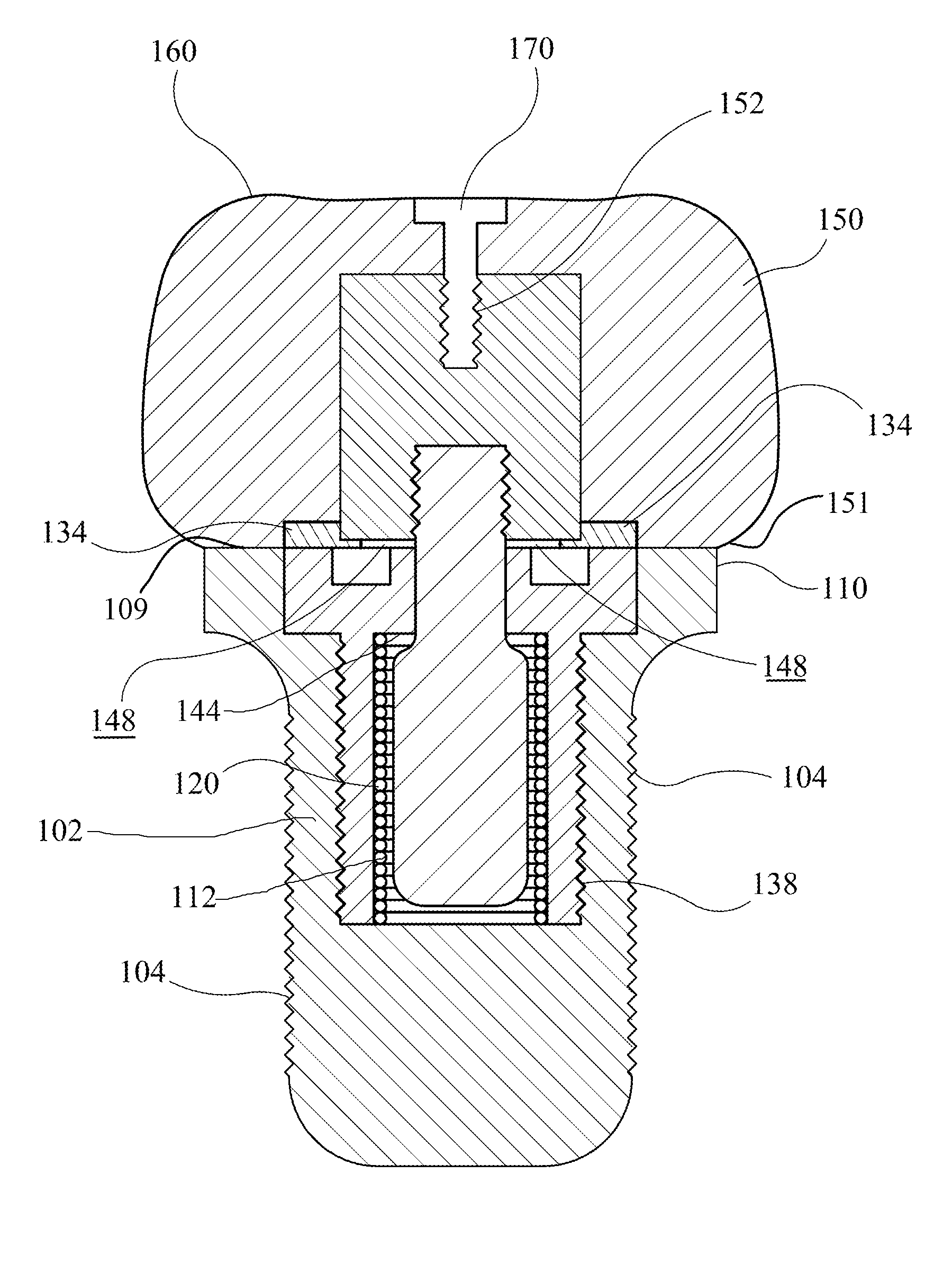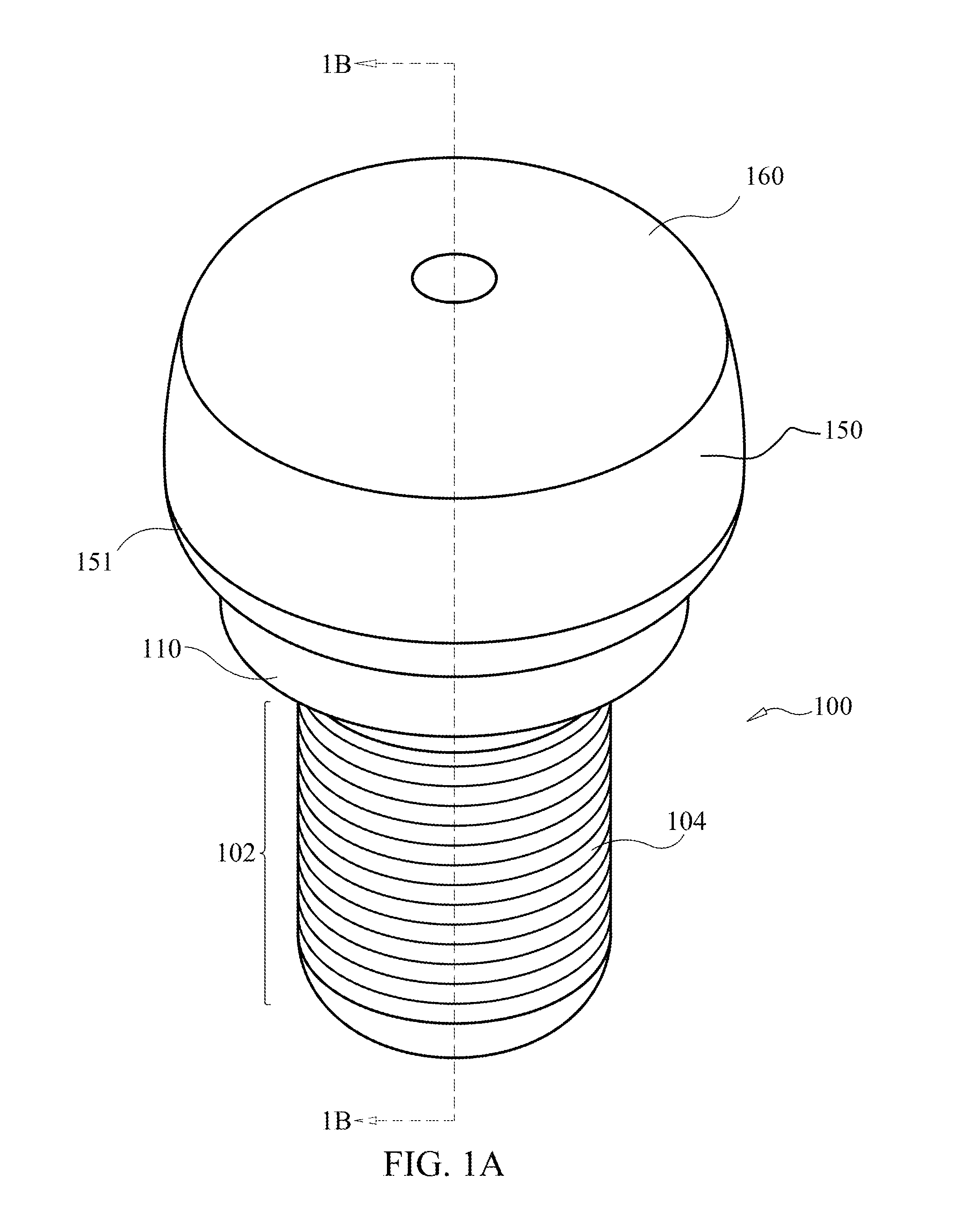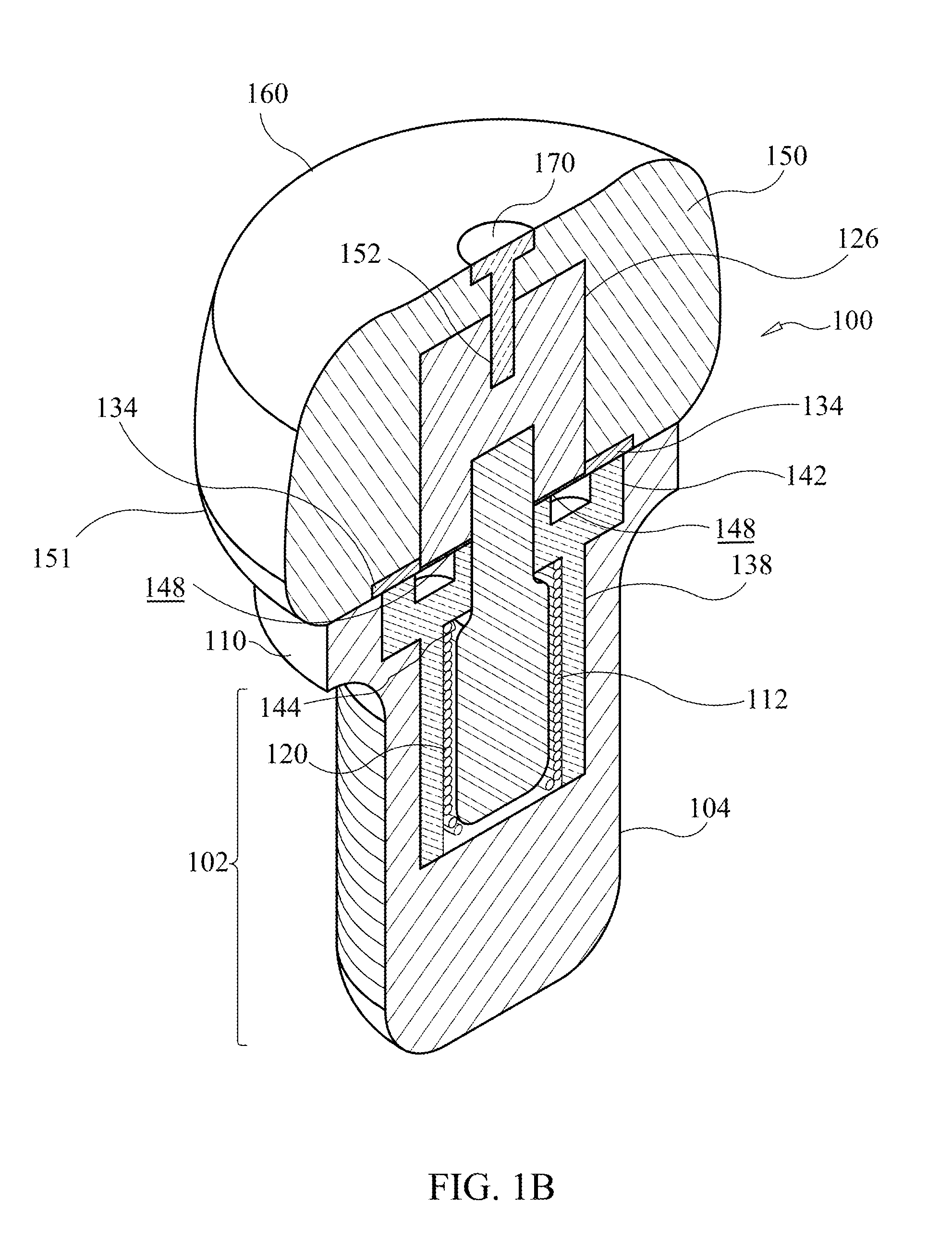Dental implant assembly for uniform distribution of occlusal forces
a technology of occlusal forces and dental implants, applied in dental implants, dental surgery, medical science, etc., can solve the problems of inadequate force distribution, dental implants fail to effectively mimic the shock absorption characteristics of periodontal ligaments (pdl), and dental implants fail to effectively mimic the force of periodontal ligaments, so as to maintain the microvascularity and viable structural support of alveolar bones, reduce deleterious forces, and dissipate vertical, horizontal and angular forces
- Summary
- Abstract
- Description
- Claims
- Application Information
AI Technical Summary
Benefits of technology
Problems solved by technology
Method used
Image
Examples
Embodiment Construction
[0056]The following detailed description is merely exemplary in nature and is not intended to limit the described embodiments or the application and uses of the described embodiments. As used herein, the word “exemplary” or “illustrative” means “serving as an example, instance, or illustration.” Any implementation described herein as “exemplary” or “illustrative” is not necessarily to be construed as preferred or advantageous over other implementations. All of the implementations described below are exemplary implementations provided to enable persons skilled in the art to make or use the embodiments of the disclosure and are not intended to limit the scope of the disclosure, which is defined by the claims. For purposes of description herein, the terms “upper,”“lower,”“left,”“rear,”“right,”“front,”“vertical,”“horizontal,”“cross-sectional,”“sectional” and derivatives thereof shall relate to the disclosure as oriented in FIG. 1A. Furthermore, there is no intention to be bound by any e...
PUM
 Login to View More
Login to View More Abstract
Description
Claims
Application Information
 Login to View More
Login to View More - R&D
- Intellectual Property
- Life Sciences
- Materials
- Tech Scout
- Unparalleled Data Quality
- Higher Quality Content
- 60% Fewer Hallucinations
Browse by: Latest US Patents, China's latest patents, Technical Efficacy Thesaurus, Application Domain, Technology Topic, Popular Technical Reports.
© 2025 PatSnap. All rights reserved.Legal|Privacy policy|Modern Slavery Act Transparency Statement|Sitemap|About US| Contact US: help@patsnap.com



